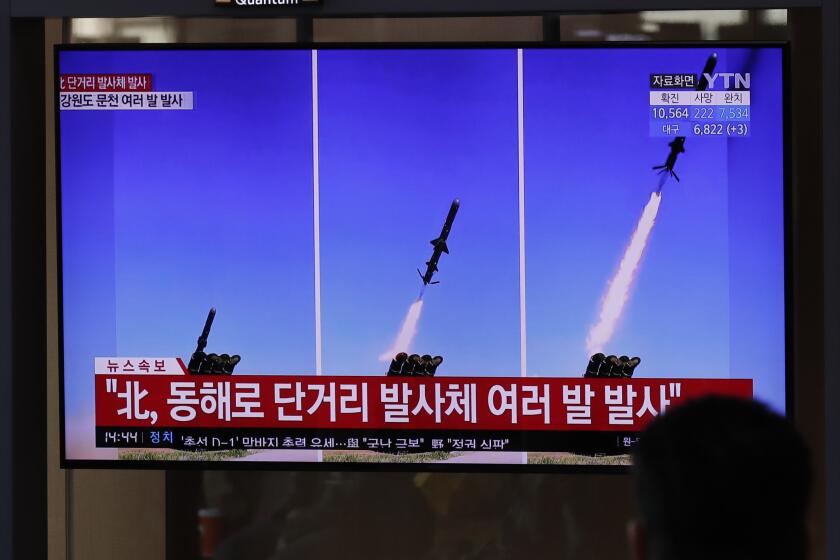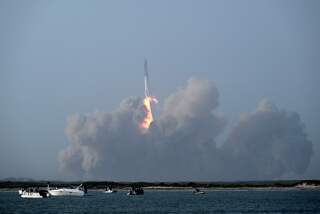Pentagon shoots down mock intercontinental missile in sea-based test
- Share via
WASHINGTON — In a first for the Pentagon’s push to develop defenses against intercontinental-range ballistic missiles capable of striking the United States, a missile interceptor launched from a U.S. Navy ship at sea hit and destroyed a mock ICBM in flight Tuesday, officials said.
Previous tests against ICBM targets had used interceptors launched from underground silos in the U.S. If further, more challenging tests prove successful, the ship-based approach could add to the credibility and reliability of the Pentagon’s existing missile-defense system.
The success of Tuesday’s test is likely to draw particular interest from North Korea, whose development of ICBMs and nuclear weapons is the main reason the Pentagon has sought to accelerate its building of missile-defense systems over the last decade.
North Korea has recently refrained from flight tests of ballistic missiles of intercontinental range and has not continued its nuclear testing. But the intentions of North Korean leader Kim Jong Un are uncertain as President-elect Joe Biden prepares to take office.
Although the current U.S. approach to missile defense is designed to protect the U.S. homeland against an ICBM fired from North Korea, both Russia and China have expressed concern that the U.S. could use its missile defenses to undercut the deterrent value of their nuclear forces, which are larger than those of North Korea.
Missile defense has long been a sticking point in U.S. arms-control talks with Russia.
South Korea’s military says North Korean missiles fired from both ground and air have splashed down in the waters off North Korea’s east coast.
Navy Vice Adm. Jon Hill, director of the Pentagon’s Missile Defense Agency, which conducted Tuesday’s test, called the result “an incredible accomplishment and critical milestone” for the program. He said the ship-based approach, if augmented with better systems for detecting and tracking hostile missiles in flight, could provide “a hedge against unexpected developments in the missile threat.”
In Tuesday’s test, the latest version of an Aegis SM-3 missile was fired from a U.S. Navy destroyer situated in the Pacific, northeast of Hawaii. Its target was a mock ICBM that had been launched from a U.S. test range at Kwajalein Atoll in the Marshall Islands.
The target missile was not equipped with decoys or other sophisticated systems of the kind that a U.S. missile interceptor might face in a real attack on the U.S. homeland.
The test had been planned for last spring but was delayed because of restrictions related to the COVID-19 pandemic.
More to Read
Sign up for Essential California
The most important California stories and recommendations in your inbox every morning.
You may occasionally receive promotional content from the Los Angeles Times.











